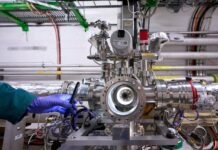A new study challenges the long-held assumption that municipal wastewater is a primary breeding ground for antibiotic-resistant bacteria. Researchers from the University of Gothenburg, publishing in Nature Communications, found that wastewater from the majority of 47 countries tested actually suppresses the growth of resistant E. coli, rather than promoting it. This finding complicates the understanding of how antibiotic resistance evolves and spreads.
Challenging Conventional Wisdom
For years, wastewater has been considered a hotbed for resistance due to the presence of excreted antibiotics and other antimicrobial compounds. The logic was straightforward: exposure to these substances would select for bacteria with resistance genes, allowing them to thrive. However, this new research reveals a more complex reality.
“What we found most intriguing is the widespread disadvantages for resistant E. coli in wastewaters from most countries,” explains Professor Joakim Larsson, lead author and director of CARe. “This suggests that municipal wastewater treatment plants may not always be breeding grounds for resistance, as sometimes perceived.”
Complex Chemical Interactions
The study measured 22 antibiotics and 20 antibacterial biocides in wastewater samples from across the globe. While some samples contained antibiotic concentrations high enough to theoretically select for resistance, none emerged as a clear driver of it in E. coli. Instead, the data suggests that complex chemical mixtures, or even unmeasured compounds, play a more significant role in determining which bacteria survive.
Why Suppression Occurs
Researchers believe the suppression of resistance is linked to the inherent costs of carrying resistance genes. If antibiotic levels are insufficient, sensitive bacteria often outcompete resistant strains. Additionally, some E. coli lineages may have adapted to the sewage environment in ways that make resistance less advantageous.
Validation Through Diverse Testing
The findings were validated using two approaches. First, researchers tested synthetic communities of 340 diverse E. coli strains, confirming the suppression patterns. Second, they analyzed natural wastewater microbial communities, achieving similar results. This strengthens the conclusion that the observed suppression isn’t an artifact of laboratory conditions.
Implications for Public Health and Future Research
This study doesn’t eliminate the risk of resistance evolution in wastewater entirely. Some samples did select for resistant strains, and wastewater remains a potential transmission pathway. However, the widespread suppression of resistance in most settings suggests that municipal wastewater treatment plants may play a more nuanced role than previously thought.
The findings highlight the complexity of antibiotic resistance dynamics in real-world environments. Further research is needed to identify the specific compounds or conditions responsible for the suppression effect. Understanding these mechanisms could lead to strategies for mitigating resistance evolution in wastewater and other environmental reservoirs.
The study reinforces that simple assumptions about antibiotic resistance in complex ecosystems often fail to capture the full picture. The suppression of resistance in most wastewater samples serves as a reminder that bacterial evolution is driven by a multitude of interacting factors, not just antibiotic exposure alone





























